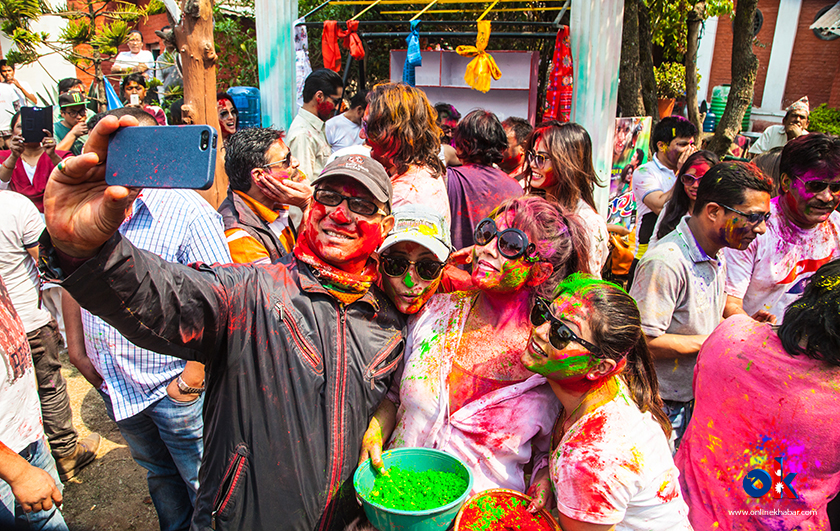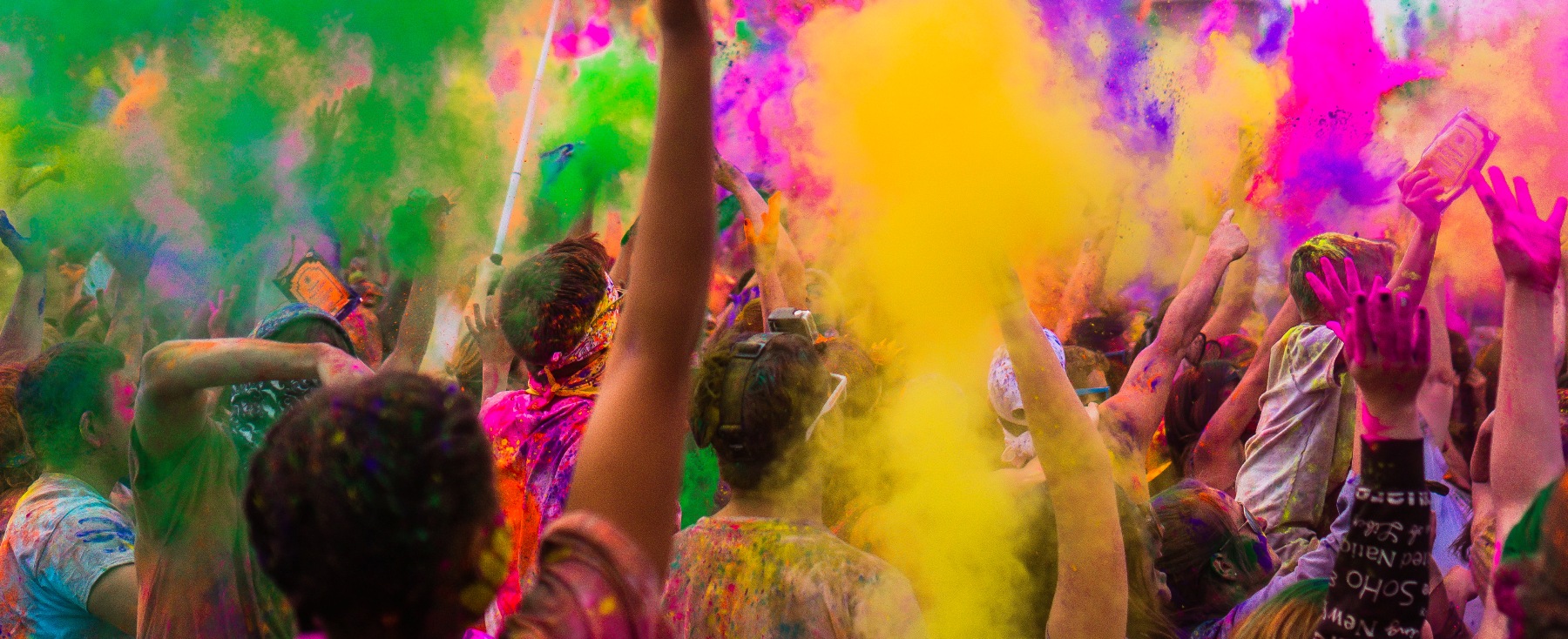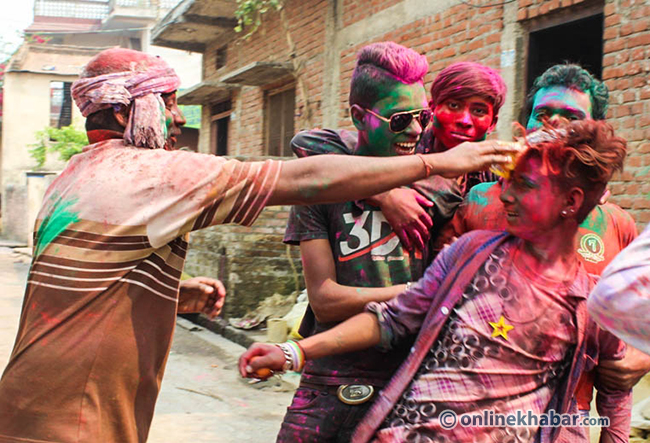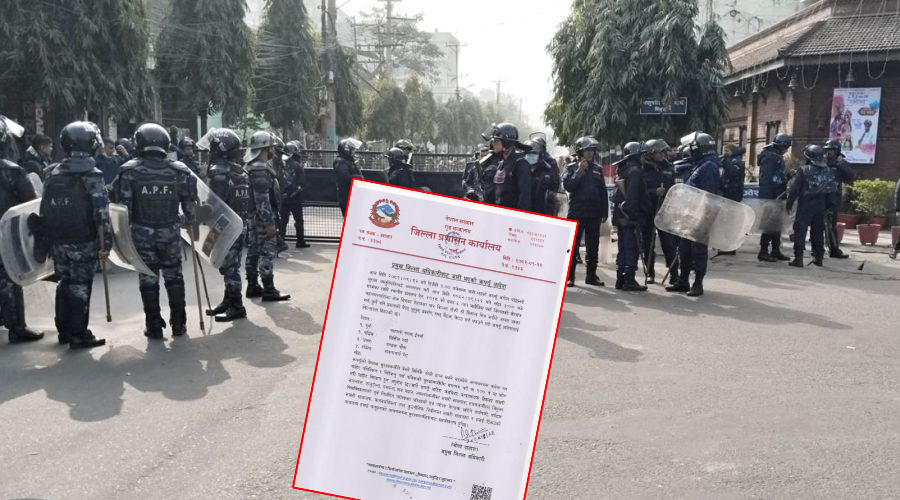
Anup Pandey, a nine-year-old Kathmandu strikes a ‘sniper pose’ with a water gun in this hand. He is excited about Holi and even before the chir is put up in Basantapur, smiles and sprays water at pedestrians from his balcony.
“We don’t have school for two-three days now, so the best thing to do is to start playing Holi,” he says with just a day to go for the big festival.
Kavita Gautam, 20, from Biratnagar is equally excited. This is her first Holi here in Kathmandu. “I can’t wait to go to Gokarna Forest Resort for ‘Colours Republic’ where there will be colours, music, dance and a lot of other actives,” she adds.
Gautam and Pandey are two of the millions of Nepalis looking forward to the spring festival of colours, also known as Holi. As years have passed, Holi has evolved, but its roots remain the same.
It’s yet another festival that celebrates the victory of good over evil. Although it is celebrated predominantly by Hindus, in the last decade, it has been adopted in many places around the world. Even here in Nepal, Holi is celebrated on two separate days. The hilly areas celebrate it a week after the chir (a traditional bamboo pole) is put up whereas in the Terai region it is celebrated a day after its celebrated in the hilly areas.

Myths
Holi’s origins can be traced to various Hindu legends; one of them is quoted more often than others. The tale is about Holika, the sister of Hiranyakashipu, a demon king who was bestowed a unique power by the creator. He could neither be killed during daylight nor after sundown; neither could he be killed on land nor on water. Hiranyakashipu, who was inebriated by his powers, demanded that his subjects call him God. His own son, Prahlad, a devotee of Vishnu, did not obey. He confronted his father to tell him that there was only one God in the universe and it was Vishnu, not him.
Prahlad had to be eliminated. The plan was simple. Holika’s superpower was that no fire could burn her. Prahlad would be placed on Holika’s lap and the duo would be put on fire. However, when the plan was implemented Holika’s powers could not save her. She was badly burnt and died while Prahlad escaped unscathed. The festival of Holi (named after Holika) celebrates the victory of Prahlad over his evil aunt Holika.
Another popular myth says that Lord Krishna, one of the incarnations of Vishnu, was embarrassed by his dark complexion and told his mother he was worried his love Radha would not accept him. So on the advice of his mother, he playfully painted Radha’s face to make it the same colour as his. It is said that lovers often celebrate Holi in this tradition, by colouring their faces their faces in the same hue during the celebrations.
Holi in Nepal

Holi in Kathmandu begins with the installation of chir, a bamboo pole fringed with colourful strips of cloths, in Basantapur a week prior to the festival. This custom is also related to Krishna as it is believed that the chir symbolises the tree on which Lord Krishna is said to have hung women’s clothes while they were bathing in the Jamuna River in northern India. As the pole is put up at Basantapur, festivities that last for a week commence. When the festival end, the pole is burnt.
With time, Holi celebrations have changed. Hurling water balloons (lola) at pedestrians, days before the festival, had once become a malice in Kathmandu. But such incidents have been reduced drastically. Things have changed so much that even on the day of the festival, people will ‘spare’ you if you’re not playing Holi. These days, it is celebrated all around the valley where those interested play with colours and water and dance to their favourite music. There are others who carry drums and other musical instruments, go from place to place, sing and dance. People visit family and friends and share Holi delicacies, food and drinks.

Things aren’t the same in Terai region where Holi is celebrated with a lot of colours. Some of them even feel that Holi in Kathmandu is celebrated in an unusual and modern manner.
Besides that, Holi is celebrated at a time of the year when the fields are in full bloom and people are expecting a good harvest.
Whatever the reason, Pandey and Gautam have a reason to rejoice, make merry and submerge themselves in the spirit of this great festival.






















